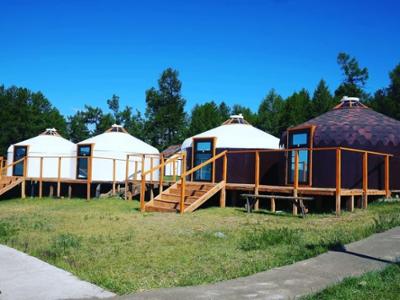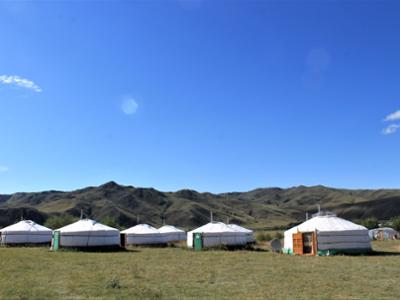
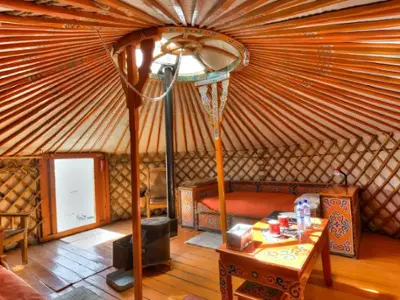
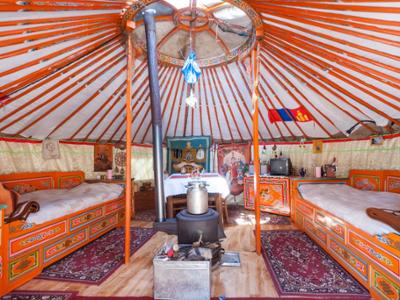
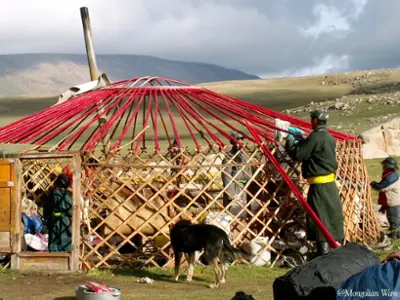
The traditional Mongolian dwelling, called a "ger," is a round structure made of walls, poles, and a peaked roof covered with felt and canvas, and tightened with ropes. It is portable, easily assembled and disassembled, and considered the most natural dwelling in the world. The structure of the ger is consistent across the country, featuring a wooden frame adorned with traditional ornamentation, covers made of white felt and canvas, ropes made of animal hair, flooring, hand-sewn felt carpets, and furniture. Most of the materials used to construct gers are made from animal wool and tail. For example, the main felt cover is made from sheep wool, ropes are made from camel or sheep wool, or horse and yak tail, and the frame is made of wood.
The Turkish word for ger is "yurt," which means "homeland" in Turkish. When this dwelling made its way to Mongolia, it adopted the name "ger," which means "home" in Mongolian. Gers are always set up with the door facing south and typically feature an altar across from the door, whether the inhabitants are Buddhist or shamanist. Historically, the floors of gers were made of dirt, but wealthier families could afford to cover the floors with felt rugs. Nowadays, most families use wooden floors during the colder seasons.
The dry and flat steppes and plains of Mongolia are known for their extreme weather. As there are no trees and shrubs to provide shelter from the wind, the steppes are windy for most of the year, with spring winds blowing up to 9 km per hour. Additionally, the steppes experience a significant temperature range, from about 40 degrees Celsius in summer to -30 degrees Celsius in winter. Gers are ideally suited for withstanding the harsh weather of the Mongolian steppe. For example, the doors are built to be very strong with wood and a wooden frame to withstand the wind. The sloping aerodynamic shape of the roof means that winds are unlikely to tear off the roof beams. Moreover, the circular shape of gers allows for quick and efficient heating and cooling, and the toono or crown opening ensures that fresh air is continually circulated. Gers are also heated evenly by a stove, and extra layers of felt can provide further insulation against the harsh winter of the steppe.
Interesting traditions about gers include using the altar space as the traditional seating area for elders or respected leaders. Additionally, the western half of the ger is considered the male part of the dwelling, while the eastern half is where women live and work.
In 2013, the traditional craftsmanship of the Mongolian ger and its associated customs were recognized as part of our Intangible Cultural Heritage by UNESCO.
When traveling across Mongolia, you will likely stay several nights in a traditional Mongolian yurt!

